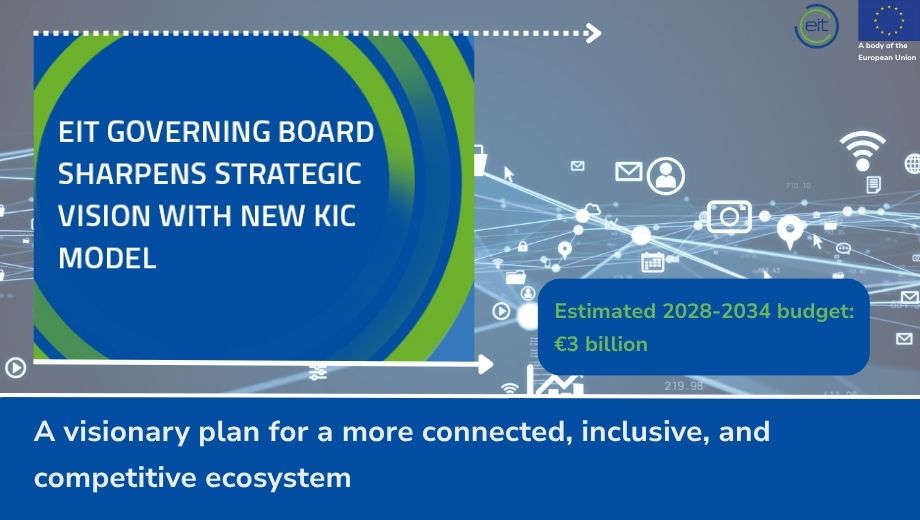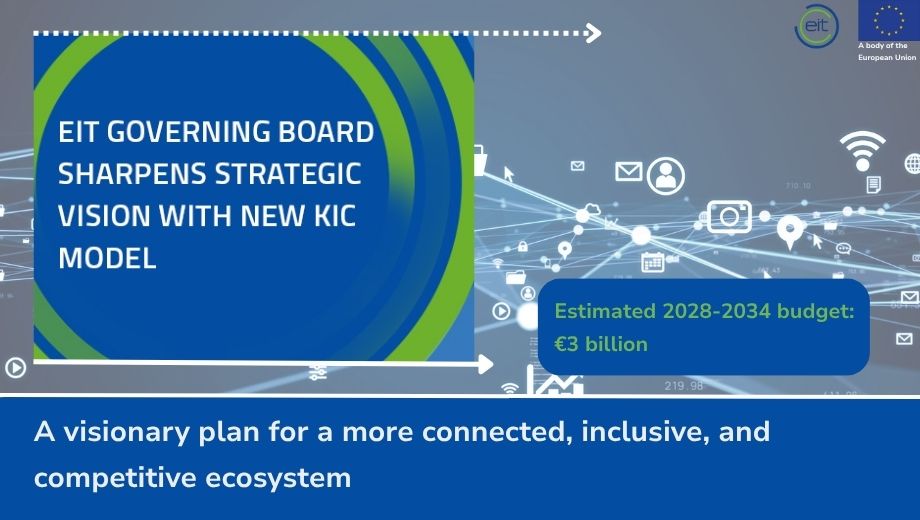
In a decisive move to reshape the European Union’s innovation landscape, the European Institute of Innovation and Technology (EIT) Governing Board has outlined an ambitious new direction that redefines the EIT’s mission, governance, and operations. This strategic update comes at a pivotal moment for the EU body, as it seeks to respond more effectively to global competitiveness challenges, regional innovation disparities, and the urgent demand for future-ready skills.
The new roadmap sets out a clear ambition: to transform the EIT from a funding mechanism for fragmented innovation activities into a central orchestrator of a more cohesive European innovation ecosystem. It represents both a strategic and operational realignment that will guide the next Strategic Innovation Agenda (SIA) for the 2028–2034 Multiannual Financial Framework (MFF).
At the heart of this overhaul is a redesigned model for the EIT’s Knowledge and Innovation Communities (KICs), the flagship partnerships that connect education, research, and business. While the current model has led to the establishment of nine sector-specific KICs — in areas such as climate, health, and digital — it is now considered ripe for renewal. The newly proposed approach introduces leaner governance, greater involvement from industry, stronger financial sustainability, and simplified operations, all aimed at enabling KICs to better respond to Europe’s evolving innovation needs.
This renewed strategy arrives in a context of mounting pressure for Europe to maintain technological sovereignty, close regional innovation gaps, and better support the growth of start-ups. The EIT Governing Board has acknowledged the barriers faced by many actors — particularly those from less-advantaged regions — in accessing EU innovation support. The new approach seeks to simplify the innovation landscape by offering what the Board calls a “coherent EU innovation journey” — a well-structured pathway that accompanies ideas from inception through to industrial scaling, with the EIT acting as a facilitator and connector.
A key aspect of this shift is a more integrated relationship with the European Innovation Council (EIC). Instead of operating in parallel, the EIT and EIC are envisioned as complementary: while the EIC focuses on scale-up financing and breakthrough technologies, the EIT will deepen its role in talent development, early-stage support, and ecosystem building. By bridging these two major EU innovation engines, the Governing Board aims to ensure a smoother, more equitable route to growth — particularly for innovators in underrepresented regions.
The strategy also identifies emerging priorities that could define future KICs. Among these are security and resilience, as well as artificial intelligence and robotics — sectors closely aligned with the European Commission’s updated competitiveness agenda. Strengthening Europe’s position in these domains is seen as essential not only for economic leadership but also for ensuring autonomy in strategic technologies.
These proposals position the EIT — thanks to its unique mix of partnerships, expertise, and shared funding — as a key driver of EU competitiveness and a force for a more connected, inclusive, and results-focused European innovation landscape. Since its inception in 2008, the EIT has supported more than 9,900 companies, contributed to the development of over 2,400 new products and services, and facilitated the raising of nearly €10 billion in external funding. Its education programmes have trained over 1.3 million learners across Europe in innovation, entrepreneurship, and deep tech. Looking ahead, the estimated budget for the next Multiannual Financial Framework is projected at €3 billion — assuming the launch of two additional KICs — a figure that reflects both the scale of ambition and the level of investment required to deliver on this renewed mission.
One of the most notable elements of the proposal is its emphasis on internal reform. The Governing Board proposes to modernize the EIT’s core operations by transforming its Budapest-based headquarters into an enabling hub, focused on supporting KICs with services, coaching, and quality assurance. This shift would be accompanied by a modest expansion in staff — from 80 to around 100 — with the goal of adding more strategic and technical expertise.
Plans also include a stronger institutional presence in Brussels to boost coordination with EU institutions and increase the EIT’s policy visibility. Alongside this, the Governing Board recommends changes to the EIT’s governance model: updating Board composition and selection processes, clarifying the roles of key leadership positions, and reviewing the legal structure underpinning the KICs to ensure flexibility and harmonization across communities.
Reducing the innovation divide within Europe remains a central goal. The EIT’s approach emphasizes inclusion, with instruments such as the Regional Innovation Scheme (RIS) and a newly proposed “EIT Regional Innovation Booster” aimed at ensuring participation from regions that are currently less active in innovation ecosystems. These tools are meant to embed more territories into European value chains while maintaining a high standard of excellence and competitiveness.
Education and skills development — long-standing pillars of the EIT’s work — continue to play a major role. As Europe grapples with a widening gap in tech-related competencies, the EIT is positioning itself to scale up its impact through more targeted educational initiatives. This new strategic direction aligns closely with the broader priorities of the European Union, as outlined in the European Commission’s Political Guidelines for 2024–2029 and the report “The Future of European Competitiveness” led by Mario Draghi. Both documents highlight the urgent need to address structural weaknesses — such as the underutilization of research, limited access to venture capital, and a shortage of skilled labor — which the EIT aims to tackle through a tested, integrated approach.
The Governing Board’s paper — more than a technical document — serves as an invitation to the wider innovation community. Universities, start-ups, corporates, research centres, and national governments are all called upon to participate in shaping this next phase of development. With the current SIA (2021–2027) nearing its final years, the EIT is now preparing not only to draft its future agenda, but also to consider adjustments to its legal mandate in coordination with the European Commission and the European Parliament.
More broadly, the strategy reflects a desire to reposition the EIT within Europe’s innovation narrative — not just as a funding body, but as a central hub for knowledge exchange, capacity building, and policy feedback. Its long-standing experience in managing cross-border partnerships gives it a unique vantage point, one that could inform more data-driven policymaking and better-targeted interventions.
Whether the EIT will succeed in this repositioning will depend on more than internal reorganization. Political commitment, stakeholder engagement, and appropriate resourcing will all play essential roles. As the European Union begins to define its post-2027 (SIA 2021-2027) innovation priorities, the EIT is clearly signaling that it is ready to take on a larger, more strategic role — one aimed at building a more integrated, competitive, and inclusive European innovation ecosystem.
For full details on the EIT Governing Board’s new strategic orientation, including proposed reforms and future priorities, the complete document is available at:
EIT Strategic Vision Paper – July 2025(PDF)
